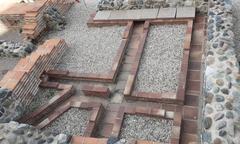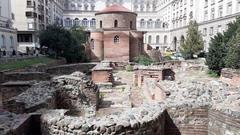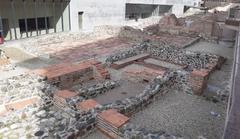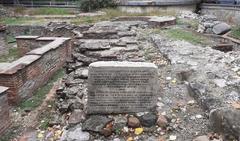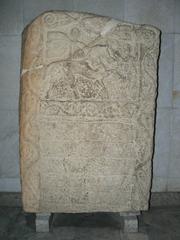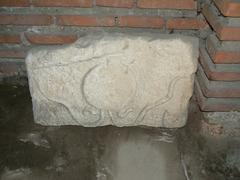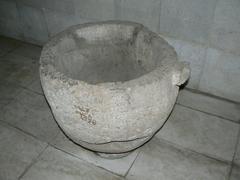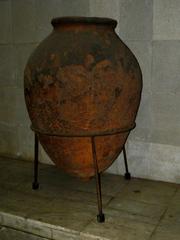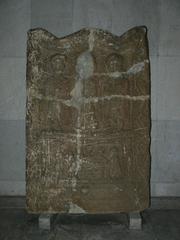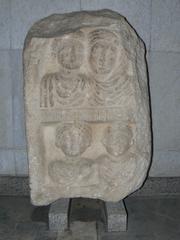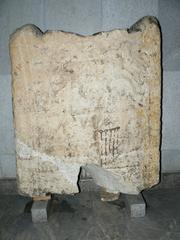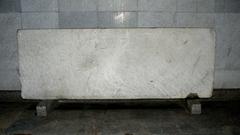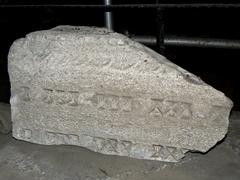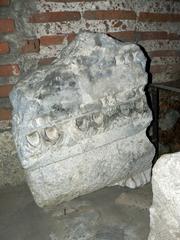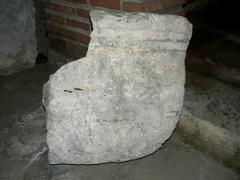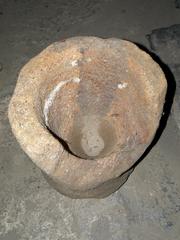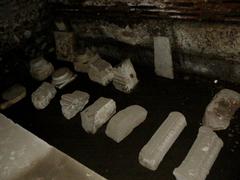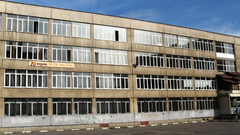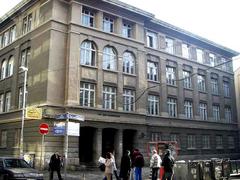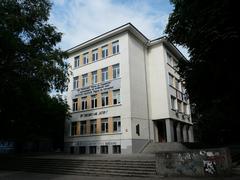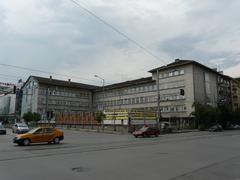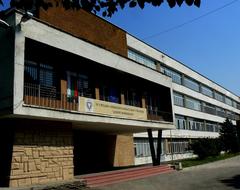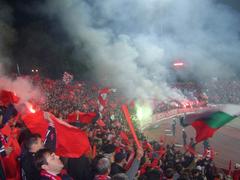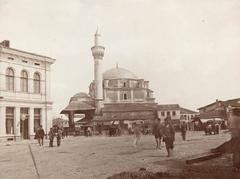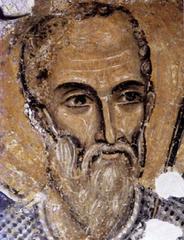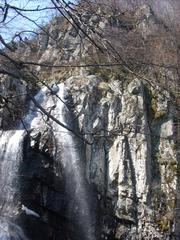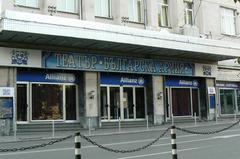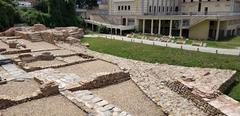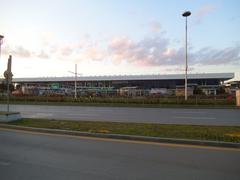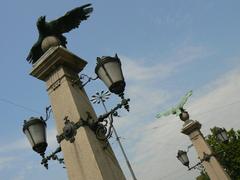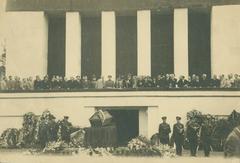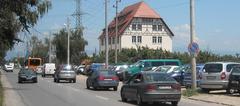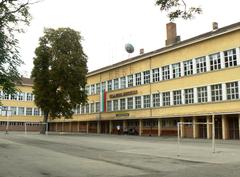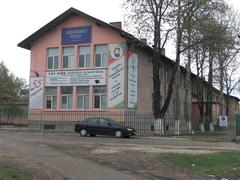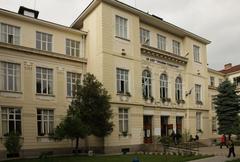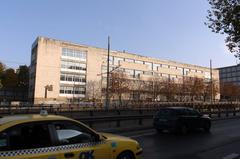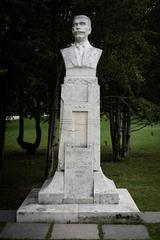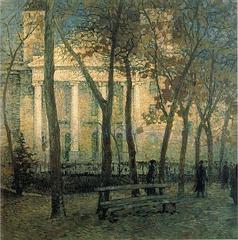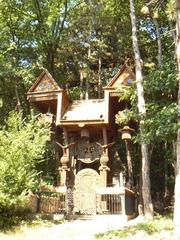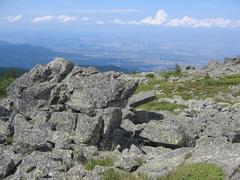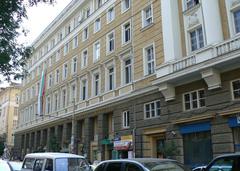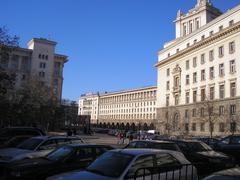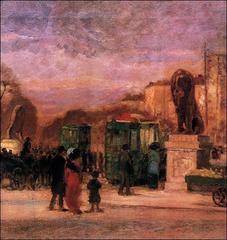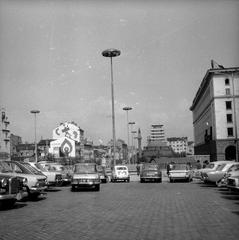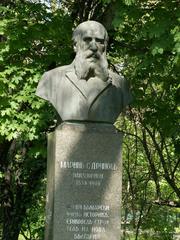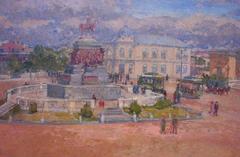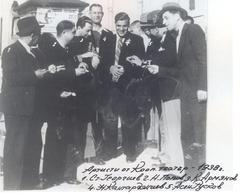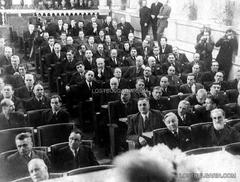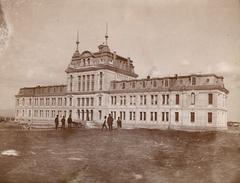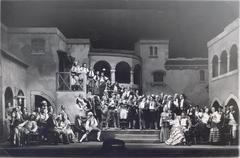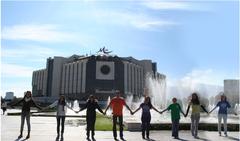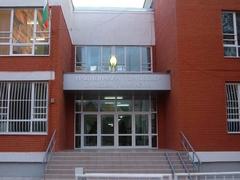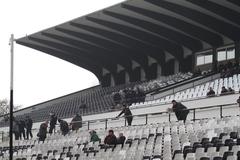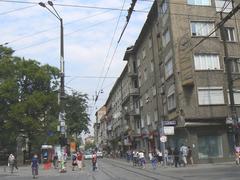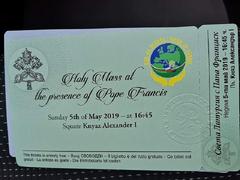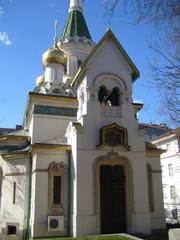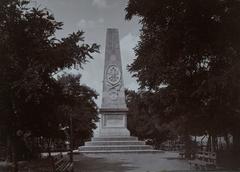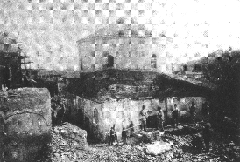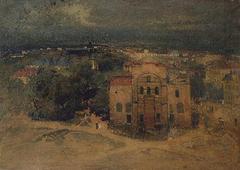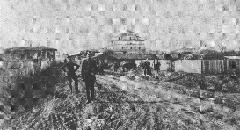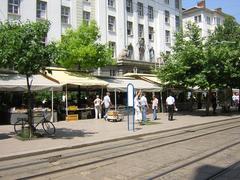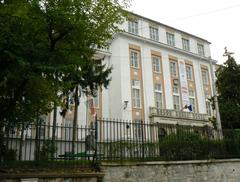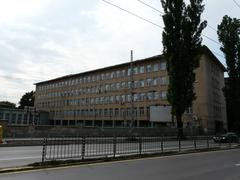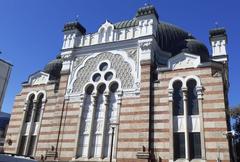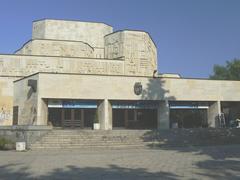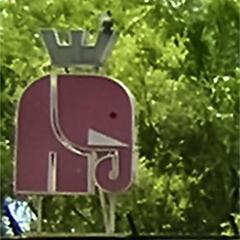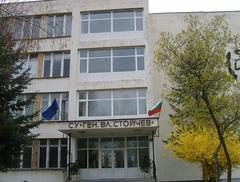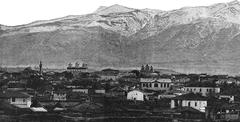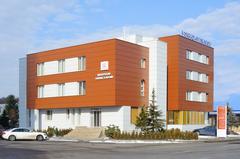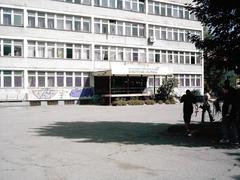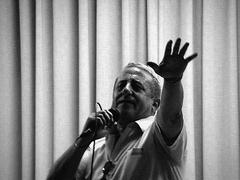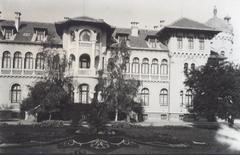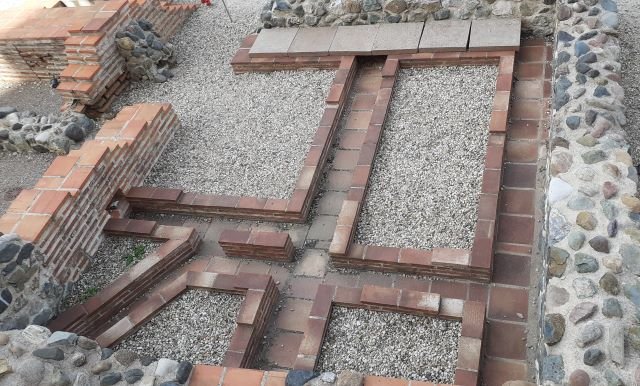
Serdica Sofia Bulgaria: Visiting Hours, Tickets, and Historical Sites Guide
Date: 14/06/2025
Introduction
Nestled in the center of Sofia, Bulgaria, the Serdica Archaeological Complex is a remarkable testament to the city’s 8,000-year history. From Thracian settlements to Roman grandeur, Byzantine and medieval Bulgarian periods, and into the Ottoman era, Serdica has stood at the crossroads of empires. Its influence is visible today, entwined with Sofia’s modern urban fabric, offering visitors a unique journey beneath the city’s bustling streets. This guide provides comprehensive information on Serdica’s historical significance, visiting hours, ticketing, accessibility, guided tours, nearby attractions, and practical travel tips, ensuring an enriching experience for every traveler (balkazaar.com; ancientbulgaria.bg).
Table of Contents
- Historical Overview of Serdica
- Archaeological Significance and Main Sites
- Visiting the Serdica Archaeological Complex
- Nearby Attractions and Amenities
- Visitor Experience and Travel Tips
- Preservation and Ongoing Research
- Frequently Asked Questions (FAQ)
- Visual Media
- References and Official Links
- Conclusion
Historical Overview of Serdica
Prehistoric and Thracian Beginnings
Sofia’s roots stretch back to the 6th millennium BCE, with Neolithic settlements leveraging the fertile valley and mineral springs (slowtravelblog.com). The Thracian Serdi tribe established a settlement in the late Bronze Age, giving Serdica its name (balkazaar.com). Positioned at vital crossroads between the Aegean, Adriatic, and the Danube, Serdica became a key regional hub (ancientbulgaria.bg).
Roman Conquest and Imperial Era
Annexed by Rome in the 1st century CE, Serdica flourished as Ulpia Serdica under Emperor Trajan (balkankaleidoscope.com). The city boasted fortified walls, paved streets, public baths, temples, and an amphitheater among the largest in the empire (ancientbulgaria.bg). The forum, located beneath Sveta Nedelya Square, was the administrative heart (about-sofia.com).
Late Antiquity and Byzantine Rule
In the 4th century, Serdica became a favored residence of Emperor Constantine the Great, who called it “my Rome.” The city hosted the 343 CE ecumenical council, strengthening its Christian legacy. Fortifications were expanded, and new churches, such as the Basilica of St. Sophia, were built (about-sofia.com).
Medieval and Ottoman Transformations
As Sredets, the city thrived under the First Bulgarian Empire, later falling under Byzantine and then Ottoman rule. Roman and early Christian buildings, like the Rotunda of St. George, were repurposed as mosques and preserved through the centuries (ancientbulgaria.bg).
Modern Rediscovery
Modern Sofia overlays ancient Serdica’s grid, with mineral springs still active near the former Central Baths. Ongoing excavations since the early 20th century—accelerated by metro construction—have revealed streets, houses, baths, and amphitheater ruins, now accessible to visitors (balkazaar.com; spottinghistory.com).
Archaeological Significance and Main Sites
Ancient Serdica Complex
- Location: Above and around Serdika metro station and Nezavisimost Square
- Highlights: Eight Roman streets, early Christian basilica, baths, houses, city walls, gates
- Access: Open-air, glass-roofed, pedestrian-friendly, and wheelchair accessible
The Ancient Serdica Complex is Sofia’s largest open urban archaeological zone, integrating the Roman city core with modern city life. Glass walkways and clear signage allow visitors to walk above ancient streets (visitbulgaria.com; Lonely Planet).
Amphitheatre of Serdica
- Location: Arena di Serdica Hotel, south of Knyaz Aleksandar Dondukov Blvd.
- Visiting Hours: Tuesday–Sunday, 9:00 AM–6:00 PM; closed Mondays
- Tickets: Free entry
Built in the 3rd–4th centuries CE atop an earlier theater, the amphitheater was among the largest in the eastern Roman Empire. Remains are displayed under the hotel, with exhibits on gladiatorial games and Roman life (Wikipedia).
Rotunda of St. George (Sveti Georgi)
- Location: Presidency courtyard, central Sofia
- Visiting Hours: Daily, 9:00 AM–7:00 PM
- Tickets: Free entry
Dating to the 4th century, this early Christian church is Sofia’s oldest building, famed for its red-brick architecture and medieval frescoes (Lonely Planet).
Additional Notable Remains
- Forum of Serdica: Beneath Sveta Nedelya Square
- Residential Villas: With mosaics and advanced infrastructure
- Public Buildings and Artifacts: On display at the National Archaeological Institute and Museum of Bulgaria
Visiting the Serdica Archaeological Complex
Location and Access
Serdica is located in central Sofia, easily reached via Serdika metro station (Lines M1 & M2). It’s within walking distance of major city landmarks and public transport.
Opening Hours
- Ancient Serdica Complex: Open 24/7, free entry
- Amphitheatre of Serdica: Tuesday–Sunday, 9:00 AM–6:00 PM
- Rotunda of St. George: Daily, 9:00 AM–7:00 PM
- Other Sites: Check locally for seasonal variations
Ticket Information
- Ancient Serdica Complex: Free
- Amphitheatre and Rotunda: Free; some adjacent attractions may charge a small fee (typically up to 5 BGN)
Accessibility
The complex is wheelchair-friendly, with ramps, elevators, and smooth pathways. Glass walkways provide safe navigation, though some amphitheater areas may have uneven surfaces.
Guided Tours
Official guided tours are available in multiple languages and can be booked via the Sofia Tourist Information Center or online. Audio guides and mobile apps are also available (visitsofia.bg).
Best Photographic Spots
- Arena di Serdica amphitheater ruins
- Decumanus maximus (main Roman street)
- Rotunda of St. George courtyard
- Glass walkways and illuminated ruins at dusk
Nearby Attractions and Amenities
- National Archaeological Museum: Impressive collections from Serdica and beyond
- St. Alexander Nevsky Cathedral: Iconic Orthodox landmark
- Central Mineral Baths: Architectural gem with active springs
- Banya Bashi Mosque: Built atop ancient thermal springs
- Cafés and Restaurants: Around Nezavisimost Square, serving Bulgarian cuisine
Public restrooms, Wi-Fi, shops, and ATMs are readily available. The Sofia Tourist Information Center near the Largo provides maps and assistance.
Visitor Experience and Travel Tips
- Best Time to Visit: Spring (April–June) and autumn (September–November) for mild weather
- Self-Guided or Guided: Informational panels in English and Bulgarian; guided tours recommended for deeper context
- Safety: Sofia is safe and walkable; exercise standard precautions against pickpocketing
- Dress Code: Modest attire in religious sites; photography permitted in most areas, with restrictions during services
- Budget: Most sites are free; local meals and transport are inexpensive
- Combine Sites: The central location allows easy pairing with Sofia’s main attractions
Preservation and Ongoing Research
Serdica’s archaeological reservation status ensures continuing excavation and conservation. The innovative integration of ancient ruins into the cityscape serves as a model for urban archaeology (coe.int).
Frequently Asked Questions (FAQ)
Q: What are the opening hours for Serdica archaeological sites?
A: The Ancient Serdica Complex is open 24/7; other sites generally open from 9:00 AM–6:00/7:00 PM.
Q: Is there an entry fee?
A: Most sites are free; some adjacent attractions, like the Rotunda, may charge a nominal fee.
Q: Is Serdica accessible for wheelchair users?
A: Yes, most areas are wheelchair-friendly, but some amphitheater sections may be uneven.
Q: Are guided tours available?
A: Yes, in multiple languages—book through official tourism offices or online.
Q: How can I get to Serdica from Sofia Airport?
A: Direct metro connection from Sofia Airport to Serdika station in about 30 minutes.
Q: Are there special events at the site?
A: Yes, especially in warmer months—check with the Sofia Tourist Information Center.
Visual Media
For images, maps, and virtual tours of Serdica and its main attractions, visit the official Sofia tourism website. High-resolution photos and interactive resources are also available via the Audiala app.
References and Official Links
- Ancient Serdica Archaeological Complex in Sofia: Visiting Hours, Tickets, and Historical Insights
- Ancient Serdica: A Journey Through Time in Sofia, Bulgaria
- Amphitheatre of Serdica, Balkankaleidoscope
- Ancient Serdica Complex, Visit Bulgaria
- Amphitheatre of Serdica, Wikipedia
- Ancient Serdica Complex, Lonely Planet
- Discover Serdica: Visiting Hours, Tickets, Guided Tours, and Historical Sites in Sofia, About Sofia
- Ancient Cultural and Communication Complex Serdica, Council of Europe
- Things to Do in Sofia, Wide World Trips
- Top 25 Attractions in Sofia, RestGeo
- Visiting Bulgaria, Travel Elsewhere
- Serdica Archaeological Park, Spotting History
- Sofia Tourism Website, Official
Conclusion
Serdica is a living monument, revealing Sofia’s ancient origins and its evolution as a vibrant European capital. With accessible ruins, informative signage, and a host of nearby attractions, Serdica is a must-see for every visitor to Sofia. Download the Audiala app for interactive tours, check the Sofia Tourist Information Center for updates, and immerse yourself in the layers of history beneath the city’s streets. Share your discoveries with #DiscoverSerdica and become a part of Sofia’s ongoing story.
